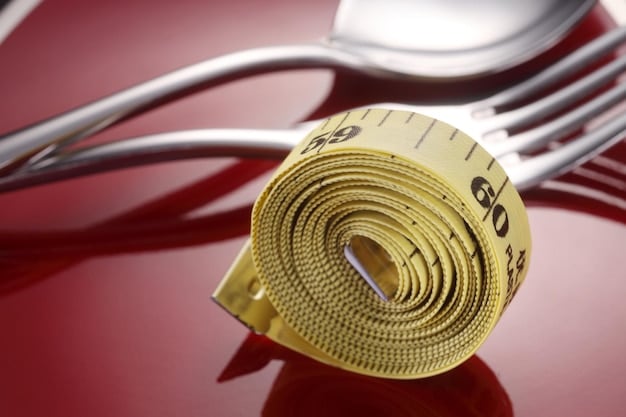Decoding Japanese Sizes: US Shopper’s Conversion Chart

Decoding Japanese Sizes: A Conversion Chart for US Shoppers to Ensure the Perfect Fit Every Time requires understanding the nuances between the two systems, particularly for clothing and shoes; this guide provides essential conversion charts and expert tips, ensuring US shoppers can confidently purchase Japanese goods online and in-store.
Navigating the world of international sizing can be tricky, especially when shopping for Japanese goods. This guide, decoding Japanese sizes: a conversion chart for US shoppers to ensure the perfect fit every time, provides all the information you need to shop confidently and avoid sizing mishaps.
Understanding Japanese Size Discrepancies
When it comes to clothing, shoes, and accessories, sizes aren’t universal. Japanese sizing, while precise, differs significantly from US standards. This section will explore the key differences and why a simple conversion chart is indispensable.
Understanding these discrepancies is the first step in ensuring a successful purchase. Learn about the common pitfalls and challenges US shoppers face when encountering Japanese sizes.
Key Differences in Sizing Systems
Japanese sizing tends to be more streamlined, often based on actual body measurements rather than the more arbitrary systems sometimes used in the US. This can lead to confusion if you’re accustomed to US sizes.
- Clothing: US clothing sizes may vary across brands, while Japanese sizes are generally more consistent.
- Shoes: Japanese shoe sizes are usually measured in centimeters, providing a direct and accurate measurement.
- Accessories: Headwear and jewelry often have different size scales, requiring careful measurement and conversion.
Understanding these fundamental differences sets the stage for using conversion charts effectively.

Clothing Size Conversion: US to Japan
Converting clothing sizes accurately is crucial for a satisfying shopping experience. This involves understanding the differences in numeric and lettered sizes and using a comprehensive conversion chart.
Whether you’re buying shirts, pants, or dresses, this section aims to provide a definitive guide to converting US sizes to their Japanese equivalents.
Women’s Clothing Conversion
Women’s clothing sizes can be particularly confusing due to the wide range of styles and fits. A reliable conversion chart is essential for ensuring the perfect fit.
Use the following table as a general guide:
- US Size 0-2 converts to Japanese Size 5-7
- US Size 4-6 converts to Japanese Size 9-11
- US Size 8-10 converts to Japanese Size 13-15
- US Size 12-14 converts to Japanese Size 17-19
Always check brand-specific sizing charts for the most accurate conversion, as sizes can vary slightly.
Men’s Clothing Conversion
Men’s clothing sizes are generally more straightforward, but still require careful conversion to avoid errors. Focus on chest, waist, and inseam measurements for the best results.
- US Size Small converts to Japanese Size Medium
- US Size Medium converts to Japanese Size Large
- US Size Large converts to Japanese Size Extra Large
- US Size Extra Large converts to Japanese Size Double Extra Large
Pay close attention to the actual measurements provided by the brand, as this can vary.
Shoe Size Conversion: US to Japan
Accurate shoe size conversion is vital for comfort and avoiding returns. Japanese shoe sizes are usually measured in centimeters, which allows for a more precise fit.
This section provides detailed charts for both men’s and women’s shoes, enabling you to find the correct size every time.

Women’s Shoe Conversion
Converting women’s shoe sizes from US to Japanese is relatively straightforward, but accuracy is key. A small difference in measurement can significantly impact comfort.
Here’s a general conversion guideline:
- US Size 6 converts to Japanese Size 23 cm
- US Size 7 converts to Japanese Size 24 cm
- US Size 8 converts to Japanese Size 25 cm
- US Size 9 converts to Japanese Size 26 cm
Always measure your feet accurately and refer to brand-specific charts when available.
Men’s Shoe Conversion
Men’s shoe size conversion follows a similar pattern to women’s, with Japanese sizes measured in centimeters. Use the following chart as a starting point:
- US Size 8 converts to Japanese Size 26 cm
- US Size 9 converts to Japanese Size 27 cm
- US Size 10 converts to Japanese Size 28 cm
- US Size 11 converts to Japanese Size 29 cm
Remember to account for sock thickness and foot width for the most comfortable fit.
Tips for Accurate Measurement
Accurate measurement is the foundation of successful size conversion. This section offers practical tips to ensure you measure correctly and avoid common mistakes.
From using the right tools to understanding how to account for variations, these tips will help you get the most accurate measurements possible.
Using a Measuring Tape Correctly
A flexible measuring tape is essential for accurately measuring your body. Ensure the tape is level and snug, but not too tight.
Here are some tips for using a measuring tape effectively:
- Measure at the widest part of your chest, waist, and hips.
- Keep the tape parallel to the ground.
- Ensure the tape is snug but not constricting.
Proper technique can significantly improve the accuracy of your measurements.
Accounting for Variations and Brand Differences
Sizes can vary between brands due to differences in design and manufacturing. Always check the specific sizing chart provided by the retailer.
Consider these factors when shopping:
- Read customer reviews to identify any sizing issues reported by others.
- Check the brand’s official website for detailed sizing information.
- When in doubt, order multiple sizes and return the ones that don’t fit.
Being aware of these variations can minimize the risk of ordering the wrong size.
Understanding Japanese Clothing Labels
Japanese clothing labels can be confusing if you’re not familiar with the terminology. Deciphering these labels is crucial for understanding the garment’s size, material, and care instructions.
In this section, we’ll break down the key elements of Japanese clothing labels, helping you make informed purchasing decisions.
Key Terms and Symbols
Japanese clothing labels contain a mix of text and symbols that indicate size, material composition, and washing instructions. Familiarize yourself with these key terms:
- サイズ (saizu): Size
- cm (senchi): Centimeter
- 綿 (men): Cotton
- 洗濯 (sentaku): Washing
Understanding these basic terms can help you navigate the labels more effectively.
Decoding Washing Instructions
Japanese washing instructions are conveyed through a series of symbols. Knowing what these symbols mean is essential for properly caring for your garments.
Here are some common washing symbols and their meanings:
- A tub with a number indicates the maximum water temperature for washing.
- A triangle indicates whether the garment can be bleached.
- An iron symbol indicates the appropriate ironing temperature.
Consult a comprehensive guide to Japanese washing symbols for more detailed information.
Online Shopping Tips for Japanese Sizes
Shopping online for Japanese clothing and shoes requires extra caution. This section provides practical tips to ensure a smooth and successful online shopping experience.
From verifying sizing charts to understanding return policies, these tips will help you navigate the complexities of online shopping for Japanese goods.
Verifying Sizing Charts on E-Commerce Sites
Always verify the sizing charts provided on e-commerce sites before making a purchase. These charts may differ from general conversion charts.
Consider these steps:
- Locate the sizing chart on the product page, usually in the description or a separate tab.
- Compare the measurements to your own body measurements.
- If possible, read customer reviews to see if others have reported any sizing issues.
Taking these steps can help you avoid ordering the wrong size online.
Understanding Return and Exchange Policies
Before making a purchase, familiarize yourself with the retailer’s return and exchange policies. This is especially important when shopping from international vendors.
Look for these key details:
- The time frame for returns and exchanges.
- Whether return shipping is free or paid by the customer.
- Any restrictions on returns for certain items, such as swimwear or intimate apparel.
Being aware of these policies can save you time and money in case of sizing issues.
| Key Point | Brief Description |
|---|---|
| 📏 Measurement Accuracy | Use a flexible tape; measure chest, waist, and hips snugly. |
| 👕 Clothing Conversion | US sizes differ; check specific brand charts. |
| 👟 Shoe Conversion | Japanese shoe sizes in cm; measure feet accurately. |
| 🏷️ Label Decoding | Understand terms like “サイズ” (size) & symbols for washing. |
Frequently Asked Questions (FAQ)
▼
Place your foot on a piece of paper and trace around it. Measure the distance from the heel to the longest toe in centimeters to find your Japanese shoe size.
▼
Generally, yes. A US size might be one or two sizes larger than its Japanese equivalent, so always consult a conversion chart.
▼
“Free size” typically fits a range of sizes, usually equivalent to a US small or medium. Check measurements for the most accurate fit.
▼
While helpful, they’re not always perfect. Always cross-reference with brand-specific charts and customer reviews for better accuracy.
▼
It’s usually best to size up, especially for clothing items. For shoes, consider the width of your feet and read reviews for fit advice.
Conclusion
master the complexities of Japanese sizes and shop confidently, armed with the resources to find the optimal fit every time.





